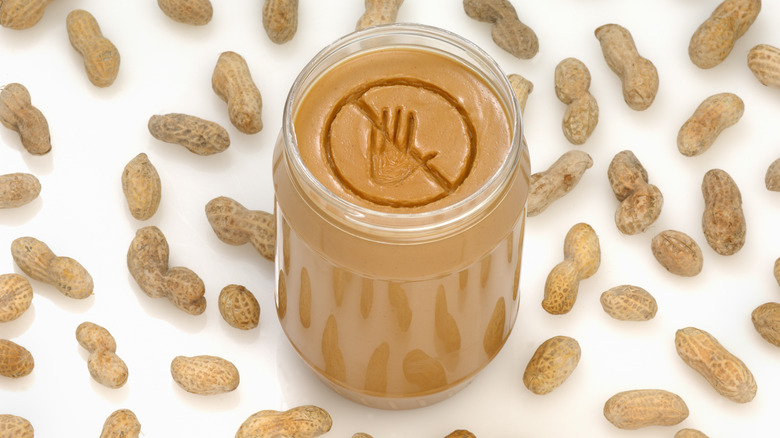Uber Eats' Super Bowl 2024 Peanut Butter Controversy, Explained
Uber Eats Super Bowl 2024 ad has already been making noise, and neither the Kansas City Chiefs nor the San Francisco 49ers have taken the field. The delivery service's commercial focuses on forgetfulness. It features big-name Hollywood stars. "Friends" couple David Schwimmer and Jennifer Aniston make an appearance, but Aniston forgets she starred alongside Schwimmer on the famous sitcom; real-life couple David and Victoria Beckham with Victoria unable to recall the name of her band. Even music artist Jelly Roll gets in on the act, forgetting that he has face tattoos.
However, in one scene, a person is eating peanut butter and breaking out in hives. With a swollen face, he remarks, "There's peanuts in peanut butter? Oh, it's the primary ingredient." Uber Eats came under fire for its insensitivity to those who live with this food allergy. Funny? Not so much. Food Allergy Research & Education posted on social media platform X: "We're incredibly disappointed by @UberEats' use of life-threatening food allergies as humor in its Super Bowl ad. The suffering of 33M+ Americans with this condition is no joke. Life-threatening food allergy is a disease, not a diet. Enough is enough."
There was a positive outcome
This news story has a positive outcome. Uber Eats not only removed the scene from its Super Bowl commercial; it took ownership of the faux pas. The food delivery service heard the complaints loud and clear, and FARE CEO Dr. Sung Poblete, told Allergic Living, "FARE would like to thank Uber for listening to our community and making the changes to their Super Bowl ad. After talking with them today, I believe we have a new ally in helping us navigate our journey with our disease."
For many people, having to avoid specific foods is a fact of life. The Mayo Clinic notes that 8% of children younger than five years old live with food allergies, and approximately 4% of adults do. Sufferers can experience serious and life-threatening reactions that include digestive problems, hives, swollen airways, and anaphylaxis, which can cause the body to go into shock. According to the USDA, 30,000 emergency room visits are a result of anaphylaxis to food. About 2,000 of these lead to hospitalization, and 150 result in death.
